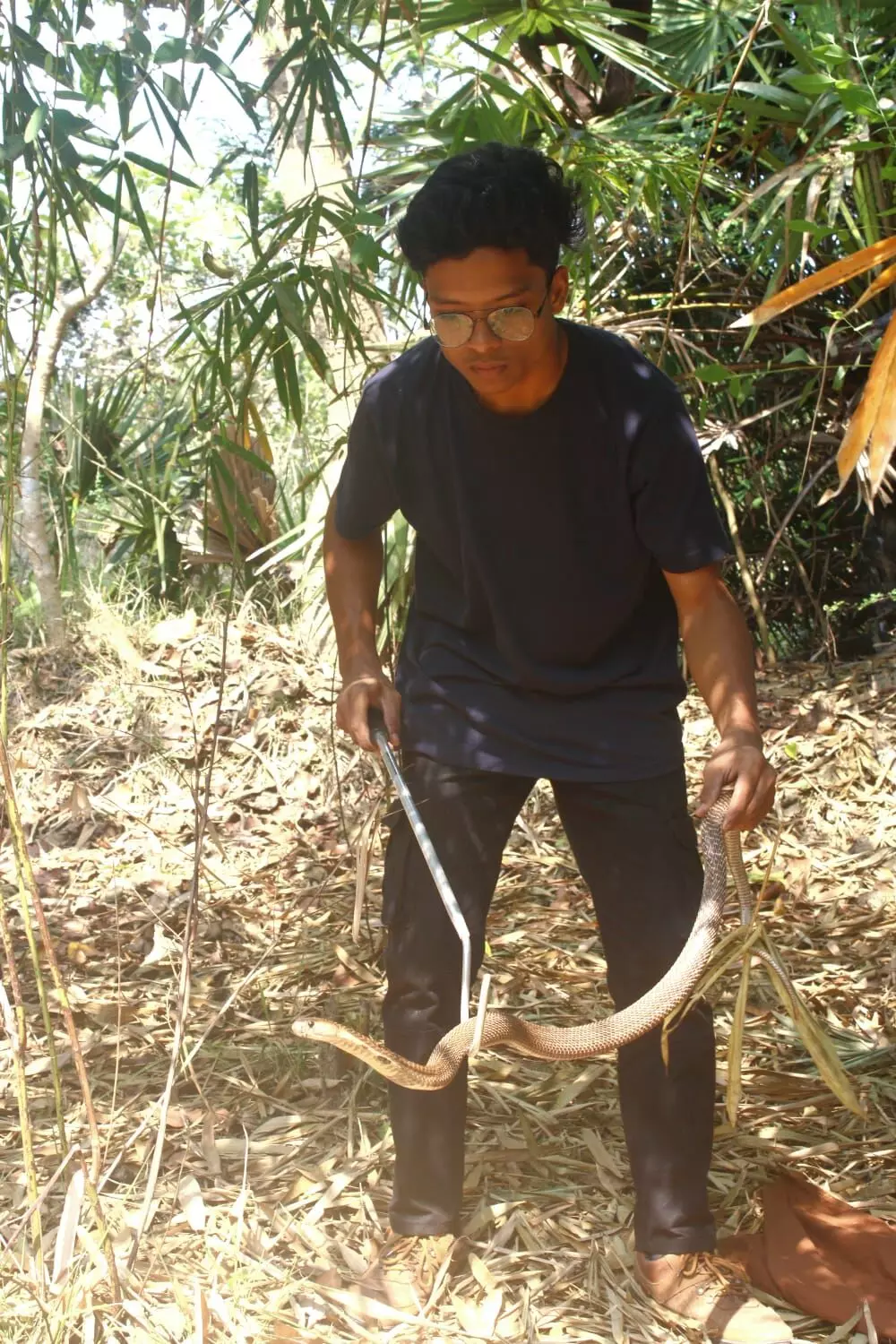Andhra teenager Sampath Kantimahanti on a mission to save snakes, reduce human-animal conflict
Srikakulam started ‘Snake Speek’ to bring awareness to the life of snakes and their importance
By Sulogna Mehta
Visakhapatnam: The snake is universally known to generate fear among people, so much so that they kill snakes even when a snake is non-poisonous. But here is a teenager from north coastal Andhra Pradesh, who is not only fascinated by snakes but has taken it upon himself to protect the reptile from indiscriminate killing and help in its conservation by generating awareness about ways to mitigate human-snake conflicts.
Animal lover from a young age
Meet 15-year-old Sampath Kantimahanti from Srikakulam, and his project ‘Snake Speek’ to bring awareness to the life of snakes and their importance.
Sampath’s journey into wildlife and snake conservation began with a desire to make a positive impact, inspired by his father. Having lost his mother at the age of five, Sampath found solace and purpose in wildlife conservation. Right from eight years of age, he was a student volunteer for an animal conservation organisation called Green Mercy.
What is Sampath planning with Snake Speek?
Asked about the unique name of his initiative, Sampath said, “Even though ‘Speek’ does not have a literal, dictionary meaning, I used it instead of the similar-sounding word ‘Speak’ to grab attention. To me, it suggests speaking, associating and advocating for snakes.”
“The primary objective of the project is to raise awareness among students, young people, and conflict-facing communities such as farmers about the importance of snakes in our ecosystem and the necessity for wildlife conservation. The project aims to instil a sense of responsibility and empathy towards wildlife, including snakes, thereby fostering a positive change in societal attitudes and behaviours,” he added.
So far, since its inception last year, Sampath has addressed hundreds of school students and visited more than 30 villages to educate and generate awareness.
Around 58,000 annual snakebite deaths in India
“Last year, after participating in an educational programme hosted by the NGO where I was volunteering, it felt so good to see a lot of students interested in nature. I thought about starting a project of my own focusing on snake conservation. Additionally, through volunteering with various animal welfare organisations such as Green Mercy, Save Snakes Society and Eastern Ghats Wildlife Society and engaging with different communities, I gained insight into the root cause of conflicts between humans and snakes, including snake bites. With nearly 58,000 snake bite deaths occurring in India annually (as per the Million Death Global Study), it became evident that lack of knowledge played a significant role. Therefore, I also started community outreach programmes to address this issue,” said Sampath.
Public awareness through educational programmes, community outreach
Elaborating on his conservation initiative, Sampath said, “These programmes focus on educating and motivating communities facing human-snake conflicts, such as farmers and villagers. We guide preventive measures such as using protective wear and torch lights at night to avoid snake bites. Furthermore, we endeavour to change people’s perceptions by emphasising the importance of snakes and dispelling the notion that all snakes are venomous and should be killed.
In fact, in India, just a few varieties of snakes are venomous. These include Indian Spectacled Cobra, Common Krait, Russel’s Viper and Saw-Scaled Viper.” The Eastern Ghats region is home to many species of snakes but hardly any are dangerous.
“To make students and others understand this topic easily, we are reaching out to them with awareness programmes in educational institutes which include effective interactive presentations, conducting games, showcasing educational videos etc. and discussions aimed at disseminating information about snake conservation and the significance of biodiversity.”
“We are also conducting live demonstrations (in the presence of professionals) to make students understand the natural behaviour of a snake and clear all myths and negative perceptions associated with the reptile. By educating the youth and students, we are empowering them to effectively manage situations involving snake bites in their villages. The final goal is to eliminate their fear,” informed Sampath.
“In addition to educational institutions, we also conduct outreach programmes targeted at conflict-facing communities such as farming communities, shepherd communities, and villagers. The project team engages directly with community members, facilitating dialogue, and providing valuable insights into harmoniously coexisting with snakes and other wildlife,” he explained.
Mission objective of Snake Speek
The project anticipates several positive outcomes:
Increased Awareness: By reaching out to students, young people, and conflict-facing communities, the project aims to increase awareness about the importance of snakes in the ecosystem and the broader context of wildlife conservation.
Behavioural Change: Through education and engagement, the project seeks to foster a positive change in societal attitudes and behaviour towards snakes and wildlife. This may include reducing snake persecution and improved coexistence between humans and snakes.